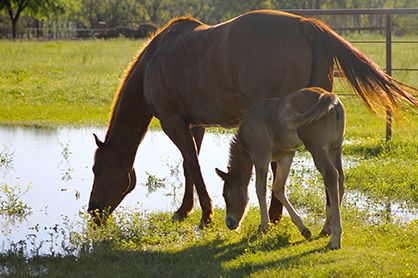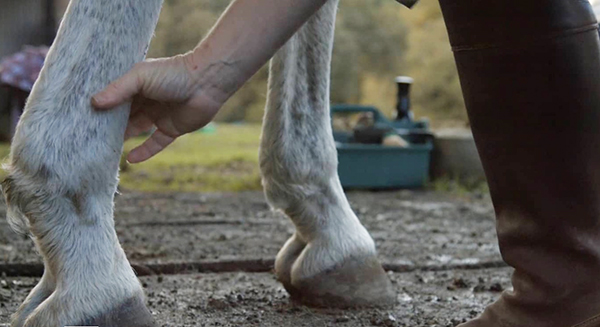How to Build a Low Maintenance Horse Barn
March 19, 2019 Comments Off on How to Build a Low Maintenance Horse Barn
Traditional wood versus metal or modern products made from plastic or cement-board can require re-staining and repainting every 3 to 4 years. The recent advent of specialist urethane stains can provide a sincere benefit to minimizing the expense and labor required for this maintenance, so be sure to ask your barn builder about this option.
Continue reading …AQHA Opposed to Legislation Intending to Ban Race-Day Medication
March 18, 2019 Comments Off on AQHA Opposed to Legislation Intending to Ban Race-Day Medication
“While we share their heart break over the high incidence of fatalities at Santa Anita, we feel it is imperative to protect our right to give certain therapeutic medications, most notably, furosemide,” said AQHA Chief Racing Officer Janet VanBebber. “We are here to serve our membership in protecting the horse’s welfare. I work to maintain open communication with regulators, sharing my years of experience as a horseman.”
Continue reading …
Fly Stoppers are beneficial insects that stop pest flies from developing, helping to control the fly population at your farm. They can be spread around manure piles, under water troughs, below bedding, the corners of pens and paddocks, and feeding sites.
Continue reading …Colic Determined to be Most Important Horse Health Care Issue in 2018
March 12, 2019 Comments Off on Colic Determined to be Most Important Horse Health Care Issue in 2018
Injury (trauma/wounds), lameness, and colic were the most common problems occurring at horse operations, totaling 51.6% and 53.4% for problems reported in 2005 and 2015, respectively.
Continue reading …AQHA Launches Microchip Pilot Program
March 11, 2019 Comments Off on AQHA Launches Microchip Pilot Program
A microchip is about the size of a grain of rice and contains a 15-digit numerical code unique to that horse which can never be altered. The ID numbers are very much like an automobile’s VIN number and provide a reliable way to verify a horse’s identity. In horses, the microchip is implanted into the nuchal ligament in the neck, using a syringe-like device.
Continue reading …USA Equestrian Trust Opens 2019 Grants For Equine Non Profits
March 10, 2019 Comments Off on USA Equestrian Trust Opens 2019 Grants For Equine Non Profits
“A year later, the ripple effects are still being felt throughout this community, opening doors to new markets and reproductive technologies previously underutilized or even unknown by most rare breed owners. The effect of the grant money was more than any of us could have imagined, giving all involved a solid sense of direction and the tools to accomplish meaningful breed conservation across the country and beyond.”
Continue reading …The Importance of a Detox Program for the Equine Athlete
March 6, 2019 Comments Off on The Importance of a Detox Program for the Equine Athlete
The liver is responsible for removing toxins from the blood, and it aids in storage of trace elements and glycogen, bile production and excretion. In conjunction with the liver, the kidney is another critical filter organ and is a major regulator of fluids and electrolyte balance. In combination, these organs are responsible for vitally important functions including producing hormones that affect the absorption of nutrition in the gut, blood pressure regulation, along with Vitamin D and red cell production. All of these processes are critically important to the performance, health and well being of the horse.
Continue reading …FILM- Getting the Right Diagnosis- Equine Cushing’s and Insulin Resistance
March 5, 2019 Comments Off on FILM- Getting the Right Diagnosis- Equine Cushing’s and Insulin Resistance
The fall is typically when seasonal rise can effect a PPID status, possibly driving new or increased hyperinsulinemia and laminitis. The spring is a time when caregivers look to check their equine’s PPID and EMS diagnosis status, to determine if the treatment plan they have in place is effective.
Continue reading …Get a Free Movie Ticket to “Listening To The Horse” Docu-Series
March 3, 2019 Comments Off on Get a Free Movie Ticket to “Listening To The Horse” Docu-Series
This documentary features over 70 of the world’s top horse people and explores all aspects of caring for horses- from health and nutrition to posture, collection, and advanced ridden work.
Continue reading …Sports Medicine “Sleuths” to Unravel Lameness Mysteries
February 28, 2019 Comments Off on Sports Medicine “Sleuths” to Unravel Lameness Mysteries
When lameness strikes and there are no ‘clues’ – no swelling, no heat, no localized area of obvious pain – where do you turn? Two of New Bolton Center’s Sports Medicine ‘sleuths’ will unravel the mystery as they discuss the common pitfalls to thelameness exam and why the naked eye is not always a reliable tool for an accurate diagnosis. Attendees can join in on cracking the case with their smartphones during this interactive presentation.
Continue reading …







